#live by that marie kondo method yo
Note
Aw why are you selling them? I’ll keep mine forever 🥺
I fell out of love with the show a long time ago - it's no point hanging onto things when you don't really care for them any more. Making more room for things I love now!

#am actively trying to not be a hoarder#live by that marie kondo method yo#i am still keeping my Lexa Chase pop tho
26 notes
·
View notes
Text
The KonMari Cure
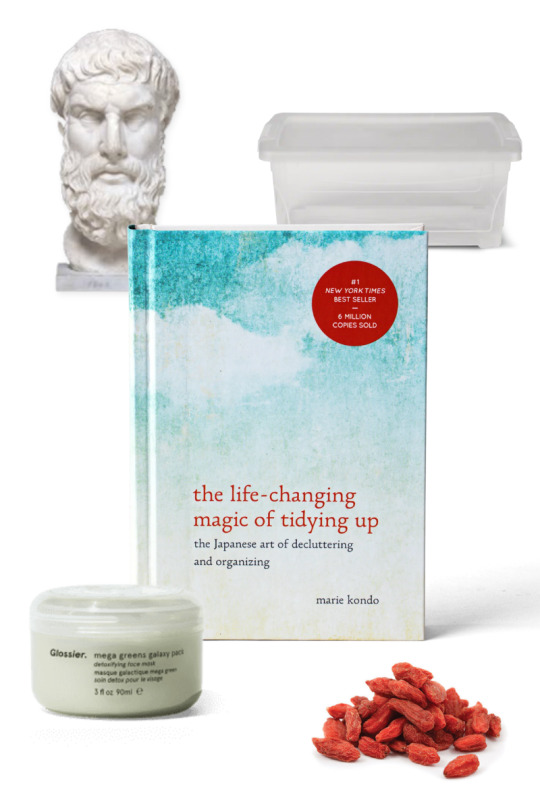
[originally written April 9 2019]
Tidying Up with Marie Kondo took the internet by storm, and naturally received critics against the KonMari Method in return. But the 15 minutes of fame glossed over the deeper meaning of the method— something established centuries ago, long before Marie Kondo ever even tried vertical folding.
I set the timer for 20 minutes. My face, stripped bare from two consecutive facial cleansers, feels like it’s being deeply pampered with this Glossier Mega Greens Galaxy Pack detoxifying face mask. Of course, my skin turns a bright shade of red every time I use it and I break out the next day, but this thing was not cheap, so maybe the seventh try’s the charm. I sit on the corner of my bed, folding the pile of clothes that’s been growing on my chair all week. To feel productive and smart, I put on a Spotify podcast telling me how to build the habits of successful people and prioritize my mental health, or something along those lines. I usually get bored around two minutes into the podcasts anyways, so I eventually turn to Netflix instead.
Ringing in the start of 2019, Tidying Up with Marie Kondo has taken over not only Netflix home screens, but nearly every part of online media. The signature approach to decluttering known as the KonMari Method claims to deep clean a house in such a way that it will never have to be deep cleaned again. By discarding possessions from easiest to most difficult (clothes, books, papers, miscellaneous, sentimental items) and subsequently using unique tricks (such as folding clothes vertically) for organization, Marie Kondo intends to rekindle the joy and gratitude in people for the things that matter the most. Given this, the KonMari Method’s widespread popularity and supposedly “life-changing magic” are usually the two criteria necessary for my next attempt at a self-care trend. I’m a total self-help junkie. The “Treat Yo Self” mentality has trapped me in this endless cycle of constant destressing, leaving me to wonder whether the consistency itself proves that it doesn’t work. A one-time, everlasting change such as the KonMari Method therefore seems like it would be my cure. It’s just my luck, then, that this one-time cure has already been tried before.
Three years ago, Marie Kondo’s book, The Life-Changing Magic of Tidying Up, was gifted to me on my birthday. After that initial rush of inspiration, I quickly dove into purging my closet. This closet consisted of four separate hanger rods, five additional shelves of folded clothing, and overhead storage packed with bins of everything from old schoolwork to stuffed animals, to gift bags and book collections. The senselessness of this organization could make a grown woman cry— and it did. My mother would wince every time she opened my door, as if the bursting amount of clothes induced slight physical pain. I knew that most of the things in that closet were kept for sentimental reasons rather than actual use, but the stress of the clutter had finally outweighed the good memories. After three long summer months, I had filled four garbage bags with my middle-school wardrobe, and packed cardboard boxes with old school supplies and unappreciated toys. I was just about done decluttering this section of my life, when my mother stopped me from tossing it out. For whatever reasons — sentimental, financial or perhaps logical — she refused to let these goods go to waste by giving them away. That was three years ago. The bags still sit in our spare room today, as the literal embodiment of my emotional baggage.
These feelings against the KonMari Method aren’t uncommon. Many people criticize the minimalist lifestyle for being bougie and unrealistic, or something exclusively for rich white people (although KonMari and minimalism are two distinct ideas, both include the fundamental step of throwing things out and living with less). In truth, some of these criticisms may be valid— out of every self-help method I have tried, The Life-Changing Magic of Tidying Up is without a doubt the most abstract, most arbitrary, and most spiritually-based thing I’ve never completed. However, it’s this very unrestricted element that makes it so easily applicable to more than just decluttering your space. KonMari isn’t just a passing trend or some falsely advertised miracle cure— it’s a mindset that has ancient philosophical roots, which speak to much more than just some trendy Ikea furniture and Apple MacBook aesthetic.
Minimalists at first glance seem to be just one of the many types of people in the world, like those who fill their daily Vitamix smoothie with chia seeds, goji berries and acai powder before their morning 5k run, and those who don’t. The minimalism undertones of KonMari, namely the mass decluttering and disposal of your possessions, are often criticized to be classist and irrational for those struggling to make ends meet. After all, the problem of having too much can only arise if you have something in the first place. Furthermore, minimalism (and by consequence, KonMari) has been associated with white privilege in developed countries. Those raised in developing countries (and their children) often have different cultural views of materialism, which can continue to thrive even after starting life in a developed country. Clearly, KonMari critics are coming from all angles to prove the problematics and “cancel” the next big thing. Though it’s easy to simply dismiss the criticism as overthinking, the real life impacts of class and culture on materialism do not stray far from the critics’ messages.
“Minimalism typically arises in circumstances of plenty,” Rachel said. Given such a lofty subject, Rachel MacKinnon, a philosophy graduate student at the University of Toronto, helped me trace the roots of the KonMari Method all the way back to Ancient Greece. In general, ancient minimalist philosophies avoided attachment to material goods to rule out any possible pain that would arise were they to be taken away. “But these philosophies were all written by pretty wealthy people,” Rachel explained, “who were happy to give the illusion of being able to live without their wealth, knowing that they won’t actually face conditions of scarcity anytime soon.” The image of an old philosopher living only on bread and water by choice, knowing that he has the means to indulge in delicacies if he ever chooses to do so, is not far off from our modern day idea of the “minimalist” with a small closet full of high-end, monochromatic designer clothing. Even at its origins, minimalism appears to have been an elitist lifestyle. “Minimalism didn’t appeal to me when I grew up poor,” Rachel added, casually. Coming from a humble maritime home to her current downtown apartment, she admits to thinking about how her values have changed. “Now that I live in Toronto, it’s suddenly very compelling— I only need minimalism because I have stuff.”
The living room had stacks of plastic storage bins lining the walls, which shrunk the already confined room. Inside the bins sat old phone books, TV guides, receipts, school supplies, and various papers. The narrow hallway to the bedrooms no longer served as a hallway, but rather as home to rows and rows of these same bins. The only way to bed was through the kitchen, since the dining area was lost in even more piles of paper. With five people living in a two-bedroom apartment, the bedroom wasn’t much of an escape either. “I hated it,” Joanne said. “I hated that we didn’t have a dinner table. I really wanted a family dinner, but we never had one.”
“If you asked my dad what sparks joy for him, he would say that everything sparks joy.” Joanne Banh is in her fourth year at the University of Toronto, and is the Co-Vice President of the University of Toronto Vietnamese Students’ Association. Her family struggled in the past with her father’s intense hoarding problem. “My dad was a Vietnamese refugee whose family lost everything while moving to Canada. Obviously it’s not the case for everybody, but maybe there’s that harbouring fear that he’ll lose it all again. It’s hard for me to understand, because I didn’t live through that.” About 8 years ago, Joanne, along with her brothers and her mother, took a year to clean out the apartment, but her father slowly grew his collection again. “I guess it just became habit,” she said. “It’s easier to just throw it in the bin, forget about it, and have it pile up.” Given that they lived in the predominantly white city of Maple Ridge, British Columbia, Joanne would use the excuse that her home was just too ethnic to have friends over. She would avoid the topic, and they would avoid the space.
The KonMari critics may have a point, to some extent. KonMari isn’t a guaranteed miracle cure for deep-seated issues with materialism such as hoarding, nor is it typically impressive to those who already involuntarily live with less. Even as a certified KonMari consultant, Michele Delory admits that the KonMari Method has not worked for everyone. “I once had a client who was going through personal things in her life,” Michele said. “Sometimes she would leave me in her home, and obviously it doesn’t work when the person’s not there. She was the only one who couldn’t follow through with it.”
Be that as it may, to say that KonMari isn’t for everybody is not to say that it’s worthless. Those who do complete the KonMari method rarely, if ever, revert back to their previous ways of life. Living her own minimalist lifestyle for the past three years and doing KonMari consultations in and around the city of Toronto, Michele has never lost faith in the method. “With every change that you make in your life, you have to first change your mindset, or else it won’t actually happen,” Michele said. In regard to that particular client, Michele believes that her mindset was the issue: “She was seeking happiness, but she wasn’t looking for it in the right way. She thought that I would just magically do it for her.” Michele still keeps in touch with past clients who regularly show her images of their organized homes, months after her consultations. Though the KonMari skeptics may remain unsure of Marie Kondo’s seemingly paradoxical anti-consumerist business model, they can’t deny the reality of Michele’s joy as a living, breathing minimalist and KonMari expert. What better way to understand the KonMari Method than straight from the horse’s (or the certified horse consultant’s) mouth?
“The philosophies of minimalism and KonMari are very similar to each other because it’s all about having a more meaningful life,” Michele explained, “but KonMari is considered different because if you really want to have 100 pairs of shoes that spark joy, you can.” This is where KonMari is often dismissed as unreliable, for its extreme subjectivity. Yet, this concept was not simply pulled out of thin air by a single peppy, 4-foot-7 Japanese woman (not that there’s anything wrong with being a single peppy, 4-foot-7 Japanese woman, just that historical evidence of the same argument can often provide more support than a single individual). The idea of minimalism in philosophy began close to the Roman Era near the end of Greek political stability, and if Marie Kondo were alive then, she might’ve been labelled as a bit of an Epicurean.
Contrary to popular beliefs of minimalist philosophies (if any beliefs of philosophies can even be said to be popular), Epicureans thought that pleasure was the good. “The point isn’t to deprive yourself,” Rachel clarified about the school of thought. “It’s to give yourself a comfortable life.” Epicureans divided pleasures into different categories based on their level of disruption, defined by how much further pain the pleasure could cause down the road. Keeping something that you love and use regularly, for example, is much less disruptive than keeping something unappreciated that constantly has to be stored and reorganized in the future. The absence of pain, for the Epicureans, also counted as a pleasure. In KonMari, the disposal of unwanted material goods is better than the stress of keeping them stored somewhere in your household. “As long as on the whole, you’re enjoying your life more than you’re not,” Rachel said, “the Epicureans gave you a much more general guideline.” Thus, although you could be a perfect Epicurean and live on only bread and water, they wouldn’t mind if you had a bit of tea — a bit of extra pleasure, like a cherished shoe collection — so long as it wasn’t too disruptive. No one said that you had to be an Epicurean, just that if you wanted to maximize pleasure, this was their way of doing so.
In the same way, the KonMari philosophy is much more lenient than most minimalist methods. “There shouldn’t be rules to the amount of stuff you have,” Michele said, “because then it becomes very competitive. It should be a positive experience when you’re going through a change like that.” Michele wears a couple basic pieces in her wardrobe, which she continues to style over five years after their purchases. She lives with her non-minimalist husband and eight year old son, who is by no means deprived of his own collection of books and toys. Her mother has not embraced minimalism or KonMari either, which Michele attributes to her cultural values back in the Philippines. Michele is not a radical minimalist living out of a backpack, but she is a genuine woman that seeks to have less stress, less anxiety, less material goods, more gratitude, more experiences, and more purpose in her everyday life. She is minimizing pain and maximizing pleasure. The KonMari Method does not claim to be the only path to happiness, but like Epicureanism, if you want the things that bring you joy, why not just choose them? History truly does repeat itself, and the KonMari Method is the ultimate revival of an age-old philosophical idea that’s finally getting its moment in the spotlight.
The real question of it all is: do I pick the rejuvenating, refreshing, or revitalizing face mask today? At this point, I wouldn’t be surprised if one of them had life-changing magic slapped across the label, either. I could also pick none of them. Instead of adding another mask, another podcast, another quick fix to my chronic stress, I could step back and focus on why I’m driven to so much self-care in the first place. Clearly, these methods don’t bring as much pleasure to me as I thought, but maybe I’m going in for the wrong reasons. Maybe I’m seeking happiness, and I’m expecting these things to just magically do it for me. Maybe instead of choosing the right pleasures, I’ve been dealing with disruptive pain. Sure, vertical folding doesn’t solve everything, but maybe changing my mindset to one that cultivates the good instead of running away from the bad is what KonMari is all about.
Whenever people are about to come over, my mother goes into a berserk state of cleaning to the point where it seems like no one actually eats, sleeps or breathes in that house. Out of all the minimalism achievements and KonMari success stories that Michele told me, the one that struck me the most was this: Michele is an Airbnb host for one of the rooms in her home. She has guests coming and going every day. “There’s no clutter in my home, to be honest,” she said. “I’ve been able to create a space that I feel good about, and I don’t ever have to worry about guests coming in. I don’t have to say ‘let me clean up first’, I never have that excuse.” If that doesn’t sound like the closest thing to a cure from chronic stress, to me, I don’t know what will.
#marie kondo#the life changing magic of tidying up#konmari#minimalism#philosophy#words#epicurianism#stoicism#vietnamese#immigrant#refugee#toronto#glossier#trend#feature article
5 notes
·
View notes
Text
On toxic waste and true meaning of attachment or How I Became a Jedi
Weird thing about depression is that [for the lack of better term] split between the Sad Biological Side of the Brain - the well known sense of despair and gloom and being turned off in general - and the emotions that are actually there despite the lack of serotonin.
So, I might be sad and tired, but I’m also very proud of getting rid off some old ass furniture and buying the new mattress CTHÜLHÜBÅD and chair HÅSTÜRCHAIR because god did i need to throw out that fucking 15 yo chair that was held together by some magic or what.
(yes, that did demand a trip to ikea. i’m proud to tell i managed to do that under 10 minutes. 9 minutes were just me trying to find the exact stuff in the ikea maze. use Aife method and you shall fear ikea no more)
And I do feel some sense of accomplishment. Yay.
it’s just funny how much baggage i’ve been dragging with me ever since i left Salty town.
furniture, hang ups, people.
I’ve got no idea why i held to it so tight, when it took so much from me. a) Money because it added an hour or two when we moved. b) Space. c) Air quality in my room (30 yo oil paints stink. why the fuck did i keep the shit that my father used?!) d) overall mental health. I guess I was just holding to it because it gave me the sense of home (despite not living there for a really long time) or sense of identity (father’s paints aka the continuation of my life long fascination with his painting) or belonging.
Since the last summer I’ve been on a bit of a detox run. No, no red beet juice nonsense. I mean looking at my life and realizing how much I hurt myself with my unwillingness to draw the line and change something about it. I’m 27. I’ve found 3 gray hair on my head and 1 grey pube. I’m too old to continue this adolescent bullshit of cowing myself because of my pathological need for acceptance and abandonment issues.
I was so attached to the old shit out of loyalty that i forgot about that one really amazing thing in my life i should have been the most loyal to. Myself. In the words of a very wise man.
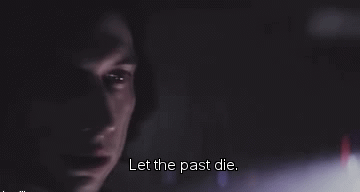
And damn, I am happy.
Despite my brain being dumb again. I’ve overcome so many challenges ever since the last summer I start to recognize myself again.
All it took was marie kondo the shit out of my life.
4 notes
·
View notes
Link
What is Japandi? the new minimalism looks like this
Did yo heard about his new trend? Japandi is the new minimalism and it seems it's here to stay.
As minimalist myself, I like to stay updated and to keep my living space as much minimalist as possible as keeping it welcoming to my friends and family.
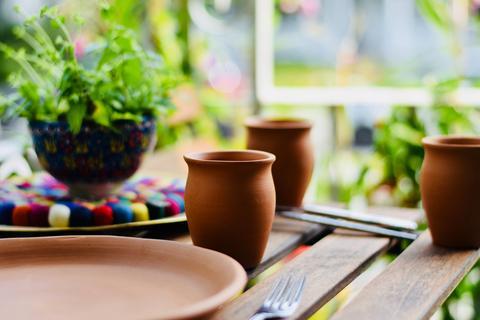
I already added more natural color palette earth tones to create this modern minimalist style. And I did not invest that much, simply adding layers on sofa, some details on furniture and decluttered my wall floating shelves.
Even I extended the feeling from the living area to the kitchen decor. Highlighting terracotta tones to create the earthy texture to get this so called Japandi aesthetic.

So if as me, you feel intrigued about Japandi, let me put together some of the basics here.
First of all, I want to be clear, I'm not a professional blogger or interior designer, I'm a home and garden decor enthusiast and I practice minimalism in my life and in mu small on-line store. I created Pottery Sol y Tierra to promote the well-being through Feng Shui inspired potteries and decorations.
So you are wondering what Japandi means?
Japandi is a home decoration style.
The Japandi style is a style of furnishing and interior decoration resulting from a mixture between the styles of Scandinavian and Japanese decoration.
If as me you appreciate Scandinavian decor and Japanese eclectic style, you will adopt this Japandi as soon as now.
Every decor lover just swooned. Japanese design meets Scandinavian minimalism in this rising home decor trend. Sleek lines, neutral color schemes and calming setups will be on the radars of pinners everywhere.
Natural color palette earth tones
Modern minimalist kitchen
Minimalist bathroom designs
The result of searching Japandi on Pinterest is so beautiful, just click here to discover the lasts Pïns about it
Pinterest is a great way to stay updated about any trend. It helping home decor enthusiasts create their dream Japandi aesthetic. Home retail brands promote a new bedding or bath collection in neutral shades, but how to integrate pottery to Jacandi ?
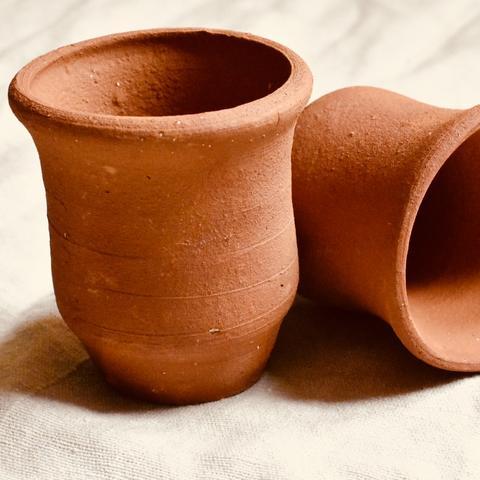
Would you like to discover my Pins? Find them here
Japandi is the new minimalism and is inspired by both , Japanese
and Scandinavian interior styles.
The basics about this new trend, Japandi : between Scandinavian and Japanese style
Scandinavian style reigns supreme in our interiors. In particular, it makes them more refined by forcing us to abandon the frills and put too flashy colors in the closet.
At the same time, the Japanese style, more discreet in terms of notoriety, offers us simple interiors that are conducive to contemplation.
Discover these japanese inspired stoneware dinner sets here
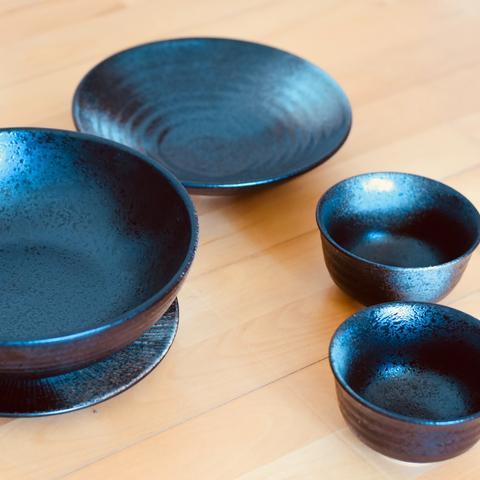
These two movements therefore have one strong point in common: minimalism. And both invite us to refocus on the essential in our decoration, and more broadly in our lives. The japandi trend therefore brings them together in order to get the best out of each one!
Read about how to create Feng Shui style in your garden here
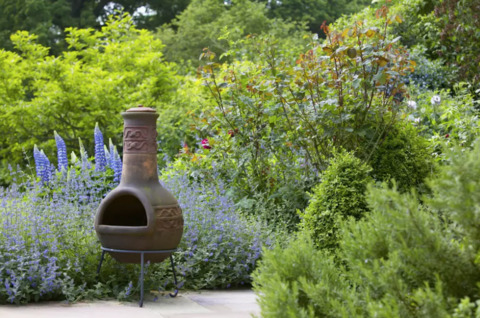
When you look at a Scandinavian bedroom and another japandi trend, you immediately notice the similarities between the two styles. So, as on our plate we appreciate the Asian fusion (especially when the chef Pierre Sang is in charge), we say to ourselves that it is only a matter of time before imagining a style of decoration on the border between these two cultures.
Find nice Japandi clay dinner sets here
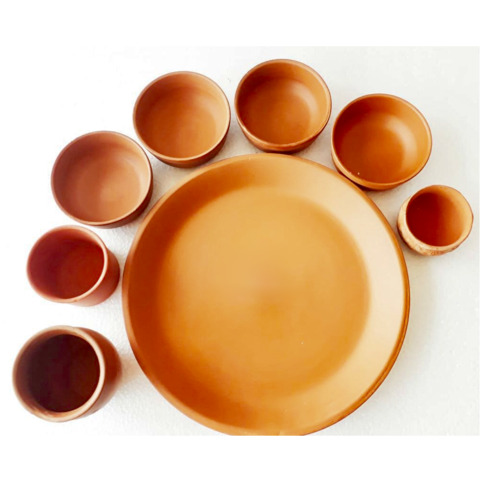
But ultimately, the countdown is no longer necessary. Because the japandi is already there, around us. And personally, I will take it again a second time!
The Japandi trend, a delicate blend of Wabi-sabi and Scandi
Do you remember the Wabi-Sabi ?
The Wabi Sabi indeed offers us to turn to simplicity and appreciate the effects of time on nature and objects.
In interior design all goes fast. We passed from eclectic, to Hygge to Wabi-Sabi.
Do you remember Hygge?
Find my thoughts about it here
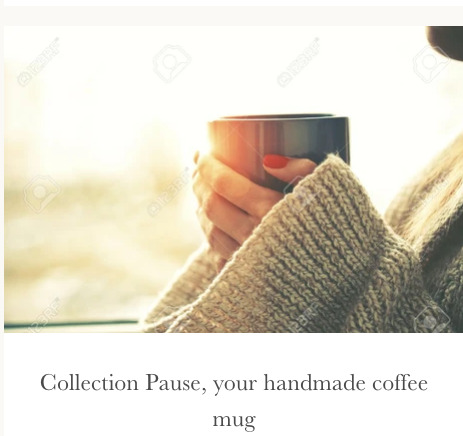
And going back to Wabi-Sabi, It is about this style of decoration, or rather this art, which consists in seeing the beauty in the evolution of things as time passes. It is the rust which invites itself on the metal, the parquet which lives and the door which creaks.
Do you feel entering into observation mode when staying in front of a piece of art?
It happens to be even drinking my morning coffee with these beautiful handcrafted coffee mugs
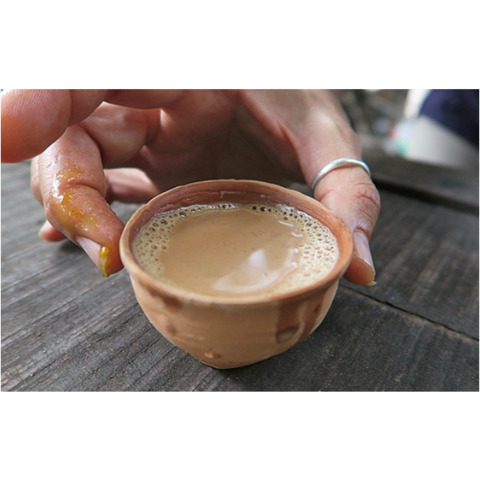
What we see is that this way of appreciating all the small details that contribute to the shaping of the history of an object.
This is basically the essence found in the japandi trend.
But this approach is tempered by the Scandinavian side of this style of decoration. Light wood, white, simple and natural materials reinforce the softness and luminosity of Japandi.
Have you ever been at Ikea? This is so unique, even knowing that they mass produce.
In both cases, one thing is certain: simplicity is the watchword.
We then limit its consumption to what is strictly necessary. It is therefore sustainable materials that we recommend. Both for their environmentally friendly character. But also, for their aesthetic appearance today which we will also benefit in 20 years.
So how to get the Japandi look in 3 easy steps?
Eliminate the clutter
Let natural light flood the room
Swap the ornaments for a few designer pieces
The goal is to make the decor simple but also functional and aesthetic.
Does this sounds like Feng Shui to you? fair enough
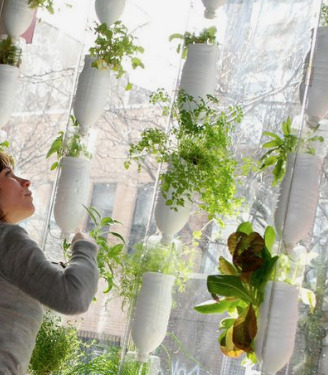
Thus the minimalism of Japanese design and the simplicity of Scandinavian lines have come together to reinvent a clean, timeless style of elegant subtlety. Personally, I have only one desire: to adopt it!
The clean color palette for a home with Scandinavian Japanese decor
A Scandinavian decoration banished black unless it was exclusively accompanied by white. In the japandi home, it's the opposite. It is used a lot and it comes with neutral tones and natural colors.
For classic colors, there are of course white, different shades of cream as well as beige. Everything then turns to more earthy tones such as brown or chestnut. But these hues, instead of turning to warmer tones, tend to join green. Adding new tones was also described on my last blog post, find it on number 10.
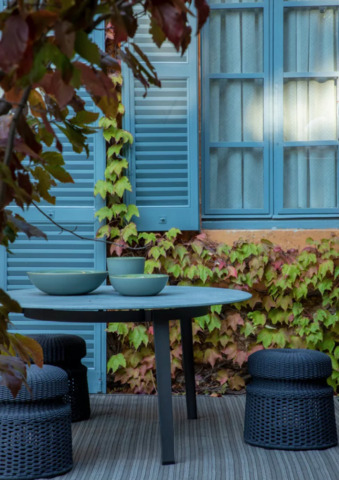
Finally, we can clearly see the dominance of natural colors. Indeed, all the colors finally resume those found on the outside.
You can sprinkle blush pink over everything to add some color if the style seems too austere. Also, to bring a little life, it is possible to add green plants in every corner.
Sprinkle blush pink will be great to match it with earthen terra-cotta home essentials. Find some ideas on my Home & Decor Pinterest board here
Japandi at home, what does it give?
Like that, it may seem simple.
But in reality, adopting the Japandi trend at home is not that simple. This is mainly due to the fact that it is often difficult to get rid of the superfluous. This could be easy if you are minimalist minded, as I am.
And this even though these things are sometimes toxic. By the way, if you have trouble sorting, I strongly advise you to follow the advice given in Marie Kondo's storage method.
For that, I let you refer to his book The Power of Less.
In the meantime, here is a small shopping list to inspire you and get you on the way to a Japandi decoration at home!
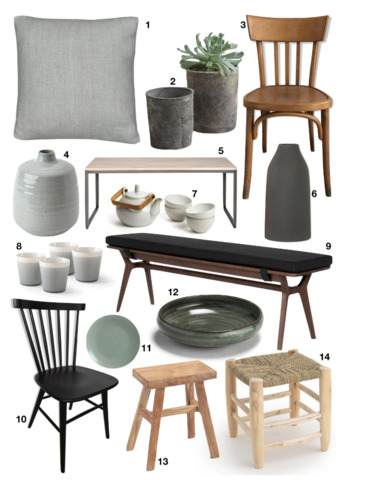
1 - Washed linen cushion cover, Onéga // 2 - Concrete planter // 3 - Vintage bistro chair // 4 - Minimalist vase // 5 - Woood solid oak dining table // 6 // 7 - Teapot porcelain and bamboo // 8 - crackled coffee cup // 9 - Jenson bench // 10 - Black wooden chair // 11 - La Redoute Intérieurs plate // 12 - deep enamelled stoneware plate AM.PM // 13 - Teak stool solid // 14 - Moroccan style stool
Thanks for reading so far.
Please stay tuned for more blogs to come by visiting my blog
You can also find me on Instagram here
and on Pinterest here
#Art#blog#earthen vessels#Feng Shui#Garden decor#Garden healing#Handmade#Healing#hygge#Interior design#Japandi#Post#Terracotta
1 note
·
View note